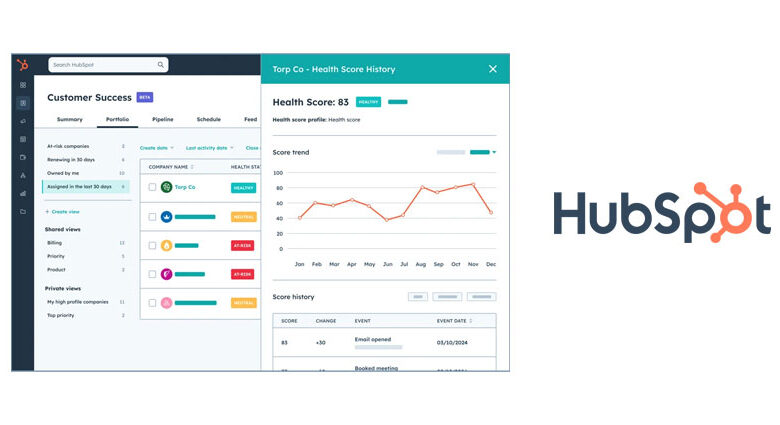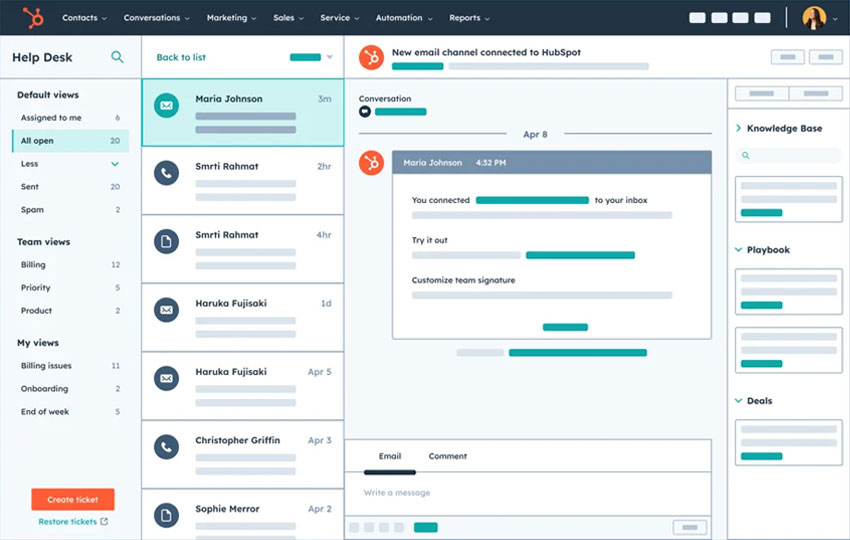HubSpot Declares “Customer Experience Is Broken”, Unveils the “All-New” Service Hub to Fix It

HubSpot has declared that “customer experience is broken” during its Spring Spotlight platform release.
In doing so, the CRM stalwart suggested that the current reactive approach to CX “isn’t working”, where brands don’t hear from customers – post-purchase – until there is an issue.
To challenge the status quo, HubSpot has unveiled the “all-new” Service Hub.
The Service Hub 2.0 serves up many new features to pull customer support leaders closer to other customer-facing functions.
As a result, they can collaborate, share data, and more proactively manage customer journeys.
Diving deeper, Paul Weston, Senior Director of Product & GM of Service Hub at HubSpot, stated: “CX Leaders are under more pressure than ever, whether it’s support fielding urgent customer challenges or success teams trying to spot those challenges before they happen.
Both customer support and customer success are vital to customer retention, but – until now – businesses have had to manage support and success in different places. Not anymore.
“We’ve been working hard together – behind the scenes – to bring together everything you need to scale support and drive retention, all in one place: Service Hub.”
One critical element within that one place is the Customer Success Workspace, now available in beta.
The Workspace provides customer success managers (CSMs) with a dedicated home in HubSpot for the first time.
From there, they can manage their book of business by tracking tasks, creating custom segments/views, and monitoring pipelines for key accounts.
The graphic below shares a sneak peek of the new Workspace, from which CSMs may soon access HubSpot’s new Customer Health Score.
The Score pools together all of the business’s CRM data – and other available insights, like product usage data – to provide a Customer Health rating that sits somewhere between 0-100.
With this, customer success can view the Customer Health status to run initiatives to retain at-risk customers, build better bonds with neutral customers, and expand the value of healthy relationships.
Moreover, they may gain helpful insights into contact center conversations with Service Hub’s new feedback management tools – which filter customer interaction data into the Workspace.
These tools do so by drafting AI-generated summaries, transcripts, and next steps after every call – pulling more data into the CX ecosystem for support, success, and other teams to leverage.
In offering such capabilities and greater customer visibility, HubSpot hopes its clients can stitch together those broken, fragmented customer experiences.
As Rebecca Wetteman, CEO & Principal Analyst at Valoir, summarized: “With this announcement, HubSpot is building out the service leg of its CRM stool, highlighting the importance of customer service and customer success in overall customer experience.
[Also, it’s] giving CSMs and customer service agents the tools they need to improve customer interactions while providing sales, marketing, and service teams with visibility across all customer engagements.
Yet, alongside tools for more connected customer experiences, HubSpot has added further foundational features to Service Hub, increasing its appeal as a business’s chief service solution.
More New Features Available Within Service Hub
In addition to the Customer Success Workspace, HubSpot has announced a Help Desk Workspace within Service Hub.
Within this Workspace, service agents can triage and resolve their most pressing tickets, maximizing their productivity.
Moreover, the new offering presents an “at-a-glance view of everything that matters most,” as the following screengrab suggests.

Meanwhile, HubSpot has also embedded AI across Service Hub – as evident in its new GPT-powered Chatbot that uses a human-like tone to answer questions and close some tickets automatically.
However, this is only one example, and Weston shared many more. Indeed, he said:
Reps can also use HubSpot AI to summarize conversations for warmer transfers and also to recommend replies based on the ticket – replies that are both customer friendly and on brand, thanks to HubSpot AI’s built-in guardrails.
Then, there are new features that don’t center on AI, including new APIs that allow businesses to connect any channel they’d like into the Help Desk Workspace.
Advanced SLAs are also available to help improve service delivery, allowing service leaders to optimize critical operational metrics, like time to reply and customer wait times.
These come alongside capacity and skills-based routing innovations that enable businesses to send tickets to the right rep at the right time.
A final example of a new feature within Service Hub is the native “more powerful, customizable knowledge base”, which will support agents and virtual agent deployments.
Yet, these are only some of the 40+ releases across Service Hub over the past year, and Weston has high hopes for the platform’s future.
“Great businesses are built with happy, long-term customers,” he concluded. “With the all-new Service Hub, we’re helping you deliver positive customer experience at scale, like never before.”
Other News from HubSpot’s Spring Spotlight
Alongside the “all-new” Service Hub, HubSpot launched Content Hub, an “all-in-one” content marketing platform that supports CX teams in developing and managing content across the customer journey.
Upon its release, the CRM leader promised to reinvent content marketing “again”.
Elsewhere, HubSpot also announced that its Commerce Hub is going global, thanks to a new partnership with Stripe, the payments solutions provider.
For a rundown of these exciting announcements, check out our article: HubSpot “Reinvents” Content Marketing, Takes Commerce Hub Global



